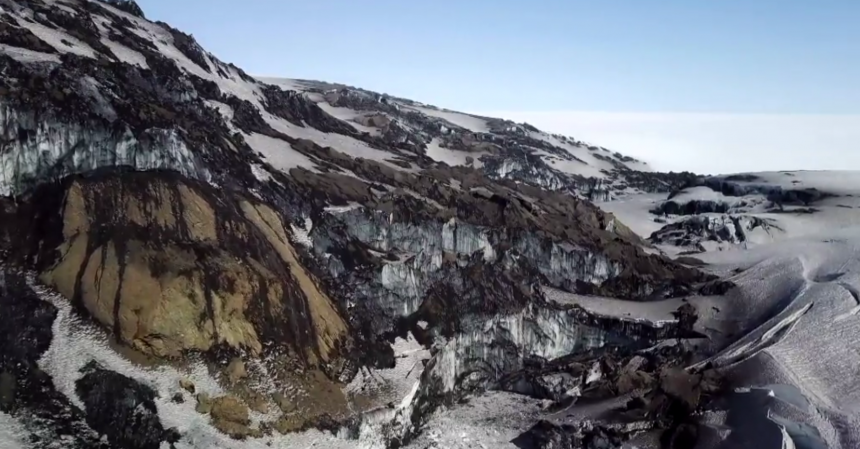
Grímsvötn is located on the west side of Vatnajökull glacier and is the most active volcano in Iceland. Over the last few decades, its activity has increased, and the resultant heat has melted part of the glacier.
“If we’d talked about this twenty years ago,” Magnús Tumi continued, “I’d have said it meant that Grímsvötn would see [an increased accumulation of water]. What’s happened over the same time period, however, is that the geothermal heat has shifted such that water does not accumulate in Grímsvötn like it did up until 1996.” Magnús Tumi said this indicates that the melt that led to the cliffs being revealed was not triggered by global warming.
Researchers will better explore the cliffs once they’ve emerged more from the side of the glacier. “This is part of a caldera,” he continued. “These are steep cliffs. What you can see of the largest of them is at least 50-metres high. If this continues, they’ll be even bigger.”
Newly uncovered cliffs have been found in three spots around Grímsvötn, but Magnús Tumi says it may not be long before more show their faces. “There are cliffs that haven’t emerged yet that were named in the 50s, Depill and Mósar, which we’ll hopefully be seeing soon.”